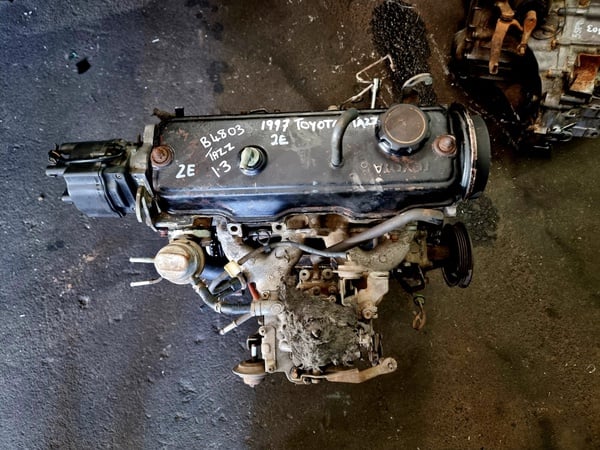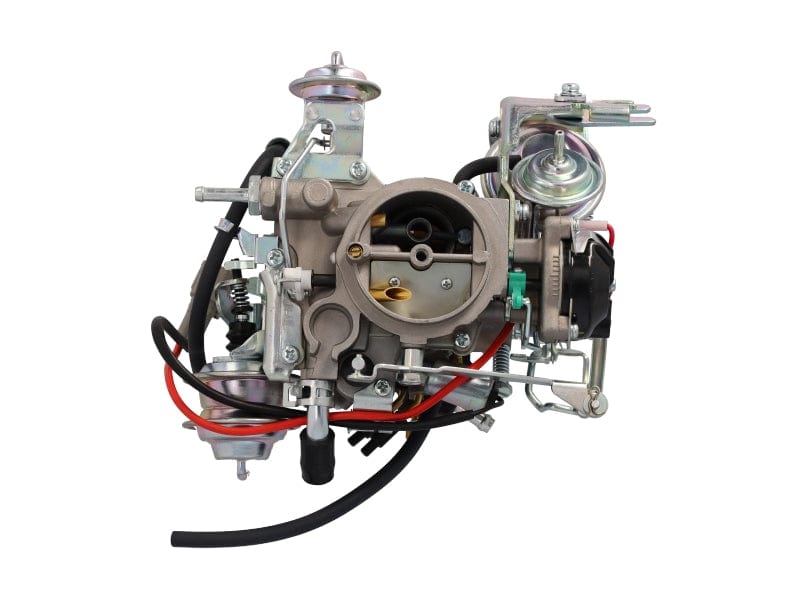Toyota Tazz: A Look at Its Popularity and Longevity in the Automotive Industry
Toyota Tazz: A Look at Its Popularity and Longevity in the Automotive Industry
Blog Article
Discover the current Trends in Engine Modern Technology With Tazz
In the rapidly developing landscape of automobile technology, Tazz stands at the leading edge, highlighting substantial developments in engine systems that focus on both development and sustainability. tazz. From hybrid engines that maximize gas efficiency to the introduction of hydrogen gas cells, the fads shaping modern-day powertrains are not just boosting performance but likewise addressing vital environmental difficulties. As the market proceeds to press borders, it is important to consider just how these growths will affect future transportation solutions and the wider ramifications for global energy usage. What exists in advance in this critical improvement?
Crossbreed Engine Innovations
Crossbreed engine innovations represent a pivotal change in automotive technology, combining the benefits of inner burning engines with electrical propulsion systems. This assimilation not only boosts gas efficiency but also decreases exhausts, conference increasingly strict environmental guidelines. By using both energy resources, hybrid engines can maximize performance, supplying power when required while conserving fuel throughout less requiring motoring conditions.
Current improvements in hybrid technology include enhancements in battery efficiency and regenerative braking systems. These innovations enable higher energy recuperation during slowdown, which can be rerouted to aid in velocity or power accessory systems. Furthermore, makers are focusing on light-weight materials and small designs to take full advantage of the effectiveness of crossbreed powertrains.
The advancement of plug-in crossbreeds has additionally broadened the marketplace, enabling drivers to charge their vehicles utilizing basic electric outlets. This feature usually enables significant all-electric range, additional reducing reliance on traditional gas. tazz. As the vehicle market continues to progress, hybrid engine innovations are expected to play a crucial duty in bridging the gap in between traditional lorries and fully electrical versions, providing a transitional solution that satisfies diverse consumer requirements and choices
Developments in Electric Powertrains
The vehicle landscape is rapidly advancing, with electrical powertrains becoming a leading force in lasting transportation. Developments in electric automobile (EV) modern technology are dramatically improving efficiency, individual, and performance experience. Secret technologies include enhancements in battery chemistry, which have boosted energy density, lowered billing times, and prolonged overall battery life.
Solid-state batteries, as an example, assure to reinvent the marketplace by offering greater safety and security and effectiveness contrasted to conventional lithium-ion cells. In addition, improvements in regenerative braking systems are allowing lorries to recuperate power throughout deceleration, adding to general efficiency.
Along with battery modern technology, electrical motor styles are becoming extra innovative. Developments such as integrated electric motors and progressed thermal monitoring systems are assisting to optimize power shipment and reduce weight, inevitably enhancing lorry characteristics.

Jointly, these developments underscore the commitment to change towards cleaner, much more effective transport options, positioning electrical powertrains at the leading edge of automotive development.
The Surge of Hydrogen Fuel Cells
Increasingly, hydrogen gas cells are obtaining traction as a viable option to standard inner burning engines and battery electrical vehicles. This innovation harnesses the chemical power kept in hydrogen, transforming it into electrical energy through an electrochemical response with oxygen. The primary byproduct of this process is water, making hydrogen gas cells an environmentally pleasant alternative with absolutely no exhausts at the tailpipe.

Automakers are progressively investing in hydrogen fuel cell innovation, identifying its potential for long-range applications and quick refueling capacities that match standard gas. Furthermore, industries such as sturdy transportation and public transportation are especially well-suited for hydrogen gas cells, where battery electrical options might fail because of weight and array restrictions.
As study and investment remain to broaden, hydrogen fuel cells are positioned to play a substantial role in the future landscape of clean transportation and power options.
Enhancements in Internal Combustion Engines
Technologies in internal burning engine (ICE) innovation are changing traditional automobiles to satisfy contemporary ecological standards and performance assumptions. Among one of the most substantial improvements includes the integration of sophisticated gas injection systems. These systems enhance the air-fuel mixture, boosting burning effectiveness and resulting in decreased discharges. Direct gas injection, for circumstances, enables far better atomization of gas, causing even more total combustion and boosted power output.
In addition, turbocharging has gained prominence, allowing smaller sized engines to supply greater performance without the weight of bigger engines - tazz. This innovation not only increases efficiency however also adds to reduce fuel intake. Variable shutoff timing systems are likewise being refined, enabling engines to adjust to numerous driving problems for boosted torque and responsiveness
In addition, the usage of light-weight materials in engine building is becoming basic, more enhancing fuel effectiveness by reducing general automobile weight. Engine control systems (ECUs) are progressively sophisticated, enabling real-time changes that maximize performance and discharges.
These enhancements collectively signify a pivotal shift in ICE innovation, aligning with global sustainability goals while still providing the efficiency motorists get out of their lorries. As the market develops, these enhancements continue to shape the future of conventional vehicle design.
Future Patterns in Engine Performance
Substantial advancements in engine performance are anticipated as makers focus on incorporating sophisticated technologies to satisfy strict ecological guidelines and consumer demands. The shift in the visit homepage direction of electrification, hybrid systems, and different gas is reshaping the auto landscape, driving innovations that enhance fuel economic situation and lower discharges.
Among the essential fads is the application of innovative materials and manufacturing techniques. Lightweight composites and high-strength alloys contribute to lowered car weight, thus boosting total efficiency. Furthermore, the adoption of turbocharging and variable valve timing technologies enables enhanced power result from smaller engines, better improving gas economic climate.

Final Thought
Technologies in hybrid engine systems, electrical powertrains, and hydrogen fuel cells demonstrate a commitment to minimizing discharges while enhancing performance. Renovations in internal combustion engines and an emphasis on light-weight materials add to overall engine efficiency.
From crossbreed engines that enhance gas efficiency to the development of hydrogen gas cells, the patterns forming contemporary powertrains are not just enhancing efficiency yet likewise attending to essential ecological obstacles.Crossbreed engine technologies stand for an essential shift in automobile innovation, integrating the advantages of internal combustion engines with electric propulsion systems.Furthermore, turbocharging has acquired prestige, permitting smaller engines to provide higher performance without the weight of larger engines. Furthermore, the adoption of turbocharging and variable shutoff timing innovations enables for enhanced power output from smaller sized here are the findings engines, even more improving gas economic situation.
Renovations in inner combustion engines and an emphasis on lightweight materials contribute to general engine efficiency.
Report this page